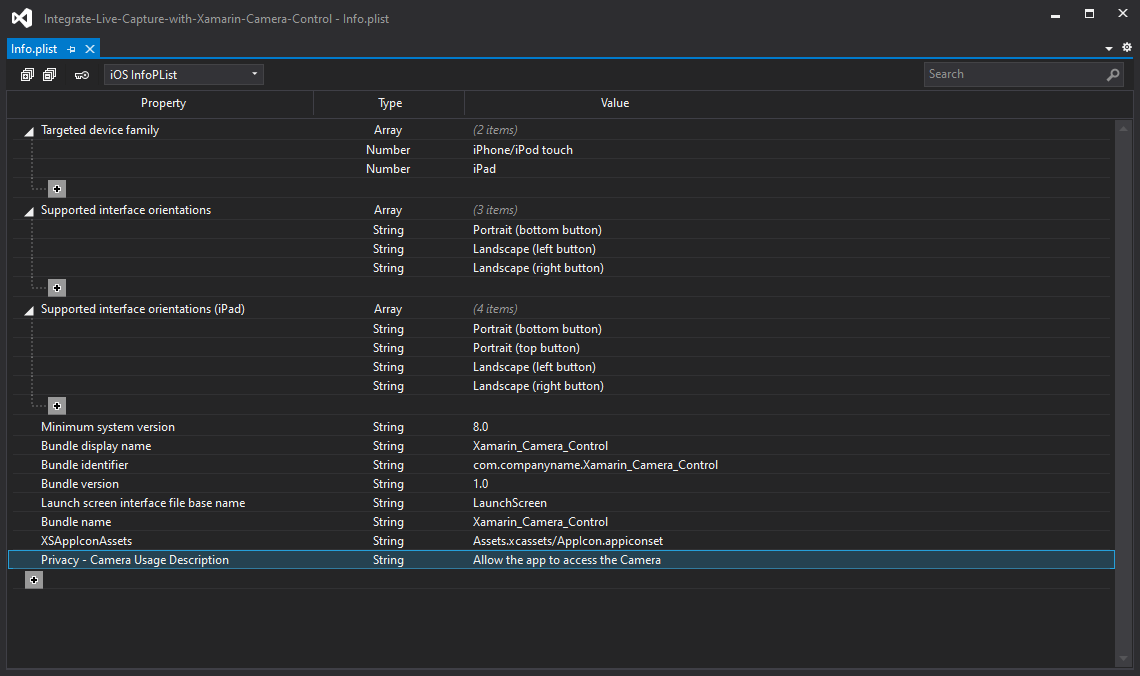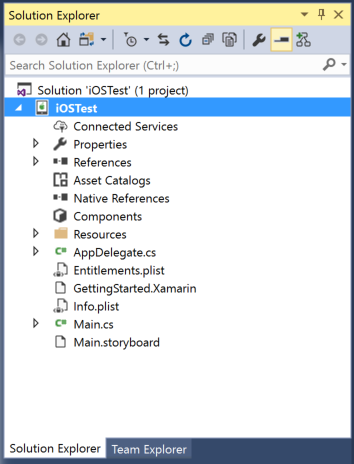

- The name contentpage does not exist xamarin visual studio how to#
- The name contentpage does not exist xamarin visual studio android#
- The name contentpage does not exist xamarin visual studio code#
This way, our IDE will generate a C# code-behind for Lang.resx making its resources accessible from anywhere within the project. Since our resource files are in a resources folder, it’ll be wise to set the Lang.resx accessibility level to Public.
The name contentpage does not exist xamarin visual studio code#
Any additional resource files created to represent other cultures to not generate a C# code-behind class file, i.e., set to No code generation.The default resource file in the project to generate a C# code-behind class file.It all boils down to the Xamarin.Forms design for handling internationalization-related resource files. So, you might be wondering, how can we choose this? But in the case that it’s set to No code generation as you might expect, the IDE will not generate a code-behind. If the Access Modifier is set to Internal or Public, Visual Studio will generate an applicable C# code-behind providing the mentioned accessibility level to its resources. Take a look at the Access Modifier option on the Lang.resx tab – this lets us decide how Visual Studio will deal with the static property generation I mentioned earlier. Rules for setting resource access modifier in Visual Studio Note: This Lang.resx will act as the default resource file for our XamarinI18n project.

Let’s go ahead and stock this Lang.resx resource file with some sentences we can localize later on: Name Value Now, we can use the Add New Item option in the IDE and choose the Resources File to add a Lang.resx resource file inside the resources directory. Let’s create a resources directory inside our XamarinI18n app.

The name contentpage does not exist xamarin visual studio android#
Note: Make sure to choose both the Android and iOS options when you are creating the application. Project Template: Mobile App (Xamarin.Forms) Let’s open up Visual Studio and create a project with the following configuration: Name: XamarinI18n Create a basic Xamarin.Forms projectįirst and foremost, let’s set up a simple Xamarin.Forms application on which we’ll perform our internationalization tasks. I will be using the following environment for my development purposes: Note: All explanations will be platform-independent.

The name contentpage does not exist xamarin visual studio how to#
So, without further ado, it is time to discover how to internationalize your Xamarin.Forms application. Hence, it is our duty as app developers to adapt and provide support when not just one locale, but a much wider audience is reaching for our applications. In the Information Age we’re living in, it’s not an exaggeration to say the whole world is becoming an interconnected global village day by day. But just it’s as important, if not more so, to speak your customers’ language, am I right? In other words, internationalization (i18n) has transformed from being something that is nice-to-have to being a need: a functional requirement. If you are reading this, you (or your organization) have already taken the right step toward reaching across multiple platforms using Xamarin.Forms.


 0 kommentar(er)
0 kommentar(er)
